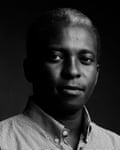I moved to Khartoum, the capital of Sudan, at the age of five, and instantly fell in love with the river. The Nile snakes through the city, offering one of very few public places to escape the sweltering heat. It was always where I felt happiest as a child, and now as an adult.
The Halfaya Bridge, pictured here, is one of the newer bridges in the city. It connects two of the capital’s three main neighbourhoods: Omdurman, where I grew up and still live, and Bahri, to the east of the Nile. Under the bridge is a little tea shop, a common sight. It’s the perfect place to pause, relax, watch the world go by and catch the breeze blowing in over the water. The river is treated like a public space in Khartoum. The various classes and communities that make up the city all come here to chat and look out over the Nile. It’s a place where people come together in a city that can otherwise feel divided.
It took me a few trips to get this shot. I want every image I take to capture what I felt when I was in that place. Here, it was the sense of time stretching out ahead of you, and a feeling of peace and calm. It was part of a series documenting the river, but I like that in this image what’s most important isn’t the water itself but the space it offers for human relationships. I took the shot a year and a half ago. Then, just the other day, I came across it again. I was hit with a sense of nostalgia. Since conflict broke out in the city a few months ago, these spaces have been largely abandoned. It’s unthinkable that I could while away an afternoon there now.
Khartoum is not the same place we all lived in. When I started the river series, I was documenting life in the city as I lived it. But now that is history. Many people have fled and places like this cafe sit empty. The shot commemorates a happier time when Khartoum was still at peace. Even if the conflict calms down, I don’t think it will return to how it was. What scares me is that the fighting is shifting from political oppositions to tribal ones, which are much more complicated to solve. It’s what happened in Darfur, my birthplace, 20 years ago. It feels as if history is repeating itself.
I think we in Sudan have so many social issues that could be resolved through art. We need to talk about both our differences and our similarities as people. So many of Sudan’s issues relate to questions of identity, how different groups live together and how different classes interact. I want my photography to be a way to have conversations. This image commemorates one of the places where such interactions were possible.
As a self-taught photographer, the way I take pictures has changed a lot. I’m no longer looking only for a beautiful image, I’m looking for a specific feeling. I want each image to capture an essence of a place. Photography has changed me: taking pictures of Khartoum has made me a much better observer of it. I understand the city more deeply.
To be an African photographer who photographs Africa is not always easy. In the case of Sudan, because the country has experienced many years of conflict in various forms and various places, sometimes that is all the outside world sees of us. Of course, those things matter – I don’t think our conflicts are well enough understood and it’s essential that they are. But there is a world beyond conflict here that is rarely seen. I think it’s the role of artists and photographers to tell stories that journalists don’t reach, to produce a counter-narrative – showing the joy and beauty of this place and its people, not only its suffering.
Ala Kheir’s work is part of Reframing Neglect, in partnership with the Africa Center, Harlem, New York, 3 August to 5 September, then at Cromwell Place, London, 26 September to 8 October.
Ala Kheir’s CV
Born: Neyala, Darfur, Sudan, 1985
Trained: “Self-taught. But I was lucky to attend many masterclasses in Africa.”
Influences: “Robert Adams, Akinbode Akinbiyi, Eugène Atget.”
High point: “Going out in beautiful weather with two fresh roles of Kodak Portra 400 film.”
Low point: “Thinking about what is going on in Sudan now.”
Top tip: “Photograph what you feel. It will make your photography unique.”

